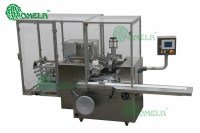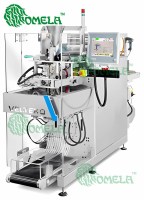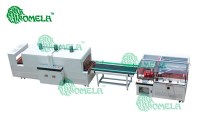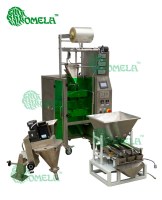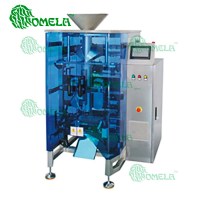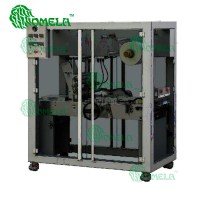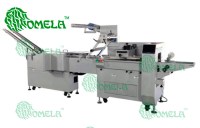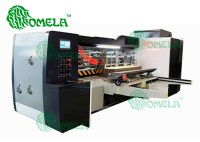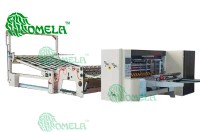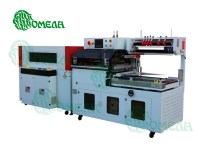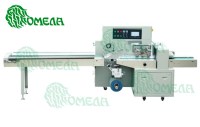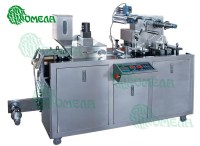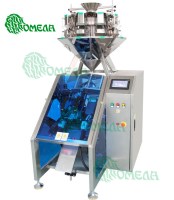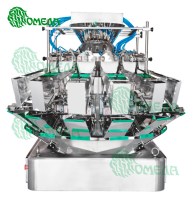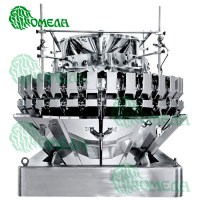Automatic lines
Automatic machine for forming and packing briquettes of butter and other fats
For forming and packing into briquettes pasty solidifying products, such as butter, margarine, cream cheese.
Vertical machine for packing free-flowing products into bags produced on it (pillow, gusset, stabilo, doy-pack)
For packaging free-flowing products in various types of packages (pillow, gusset, stabilo, doy-pack).
Automatic machine for packaging long products in shrink film 052.110.3015ML-5030E
For packaging long items in shrink film
Universal packaging machine (bags Sashe/Pillow)
For packaging of free-flowing and dust-producing products in pillow-type or sachet-type bags.
Automatic line for packing long products (by straw type) 136.104.01
For group packaging of elongated products (such as straws, sausages).
Envelope packing machine (cellophane wrapper) 054.113.290
For box packaging in cellophane.
Horizontal packaging machine "flow pack" on the rib with automatic feed 051.111.115
For group packaging of small piece goods (eg biscuits, cupcakes).
Automatic slotting machine (5 knife sets) 090.112.1418
For the production of reamers of different types of corrugated packaging
Automatic L-sealer (052.110.400LA or 052.110.5030LG) and thermotunnel
For packaging a wide range of products in shrink films.
Horizontal packaging machine 051.55.350XSPE for packaging long products in flow-pack bags
For packing bulky goods in a pillow bag, without length limitation.
Automatic machine for packing in aluminum-plastic blisters
For packing capsules, tablets, pills, candies and other goods in blister packs.
Line for packing fragile goods 021.83.02
For filling and packaging of fragile, well-flowing and small-piece products in "pillow" and "gasset" bags.
Improved 10-head Combination Weigher, for fragile products 191.10.80
For weighing and packing fragile goods.
32-head combination weigher 191.83.32
For weighing and packing of loose and small piece goods.
By automating the processes of filling and packing products, we get clear advantages over manual and semi-automatic packing options. The main of these benefits are:
- Savings due to lower costs for wages, electricity, logistics, etc.
- The packaging is uniform, has a stable shape and quality, regardless of the moral and physical condition of the worker who produces the packing.
- It is possible that some options can be performed that cannot be performed manually, or are impractical, etc.
The question arises: "Why, in this case, people do not purchase exclusively automatic equipment?" The fact is that automatic packing lines are usually highly productive and if they are not properly loaded, the cost of packing increases dramatically. In other words, if the production volume for loading the machine is not enough, then you have to purchase a semi-automatic or manual machine.
The machines can perform both the entire range of packing operations, and some of the latter. An example of the first case is the packing of bulk products in plastic film bags. The machine forms a bag from the web, doses the product to be packaged, seals and cuts off the bag, puts down the dates of manufacture and expiration date, makes the necessary options, for example, punching Euroslot, holes for a stud. An example of the second case can be the packaging of dairy products in polymer containers. The machine does not manufacture containers. Ready cups are placed in special stores (cassettes), from where they are automatically removed, the product is dosed into them, a lid made of aluminum foil is placed on top, sealed, date is stamped, etc.
In automatic mode, individual functions can also be carried out, such as counting packages or dosing. Considering the frequency of their use, we will focuse on automatic weighers in more detail.
In modern enterprises, where there is a need for a clear dosing of the amount of liquid, bulk and other products, an automatic weigher is often one of the most important devices directly involved in the production process. When preparing building mortars, for example, it is necessary to dose crushed stone, sand, cement, water and various additives into a mixer. All this can be done automatically, without human intervention, by a signal from a time relay, either from a limit switch located on the valve emptying the mixer, or in some other way.
Dosing, depending on the need, can be carried out by weight, by volume, by time, by the number of revolutions of the dosing element, by count (quantity), etc.


